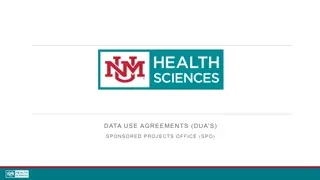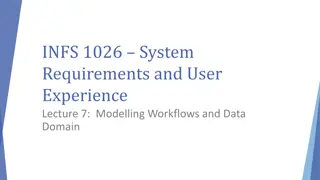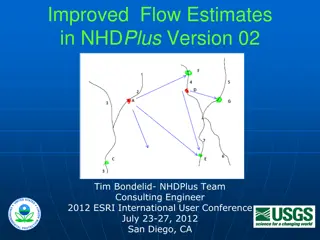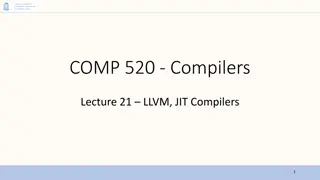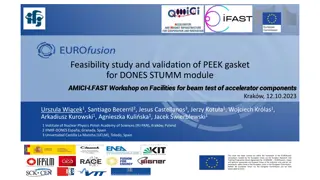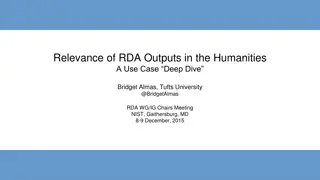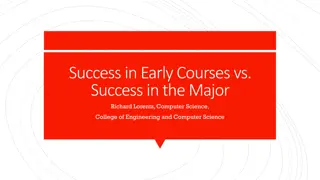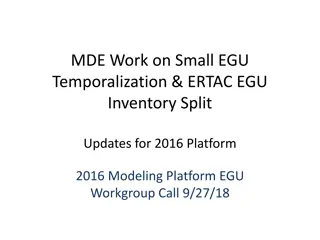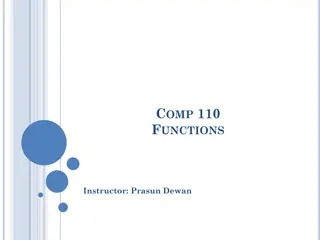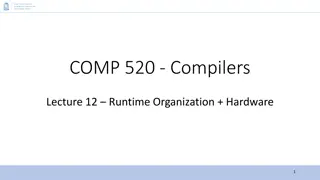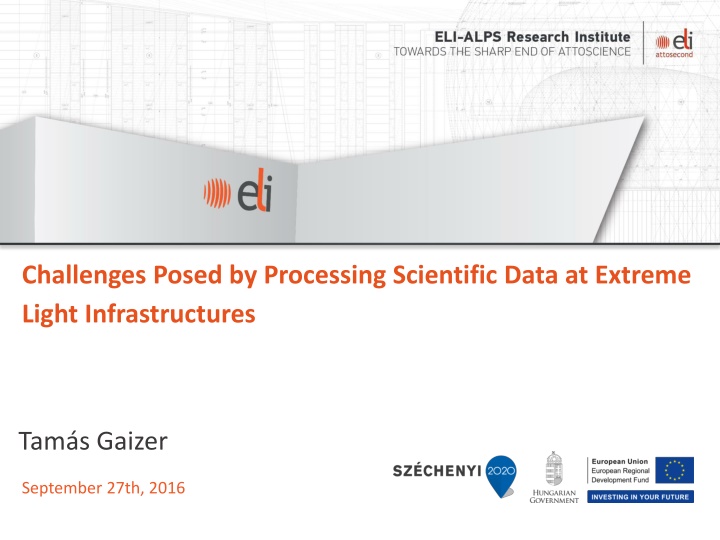
Challenges in Processing Scientific Data at Extreme Light Infrastructures
Explore the challenges faced when processing scientific data at Extreme Light Infrastructures (ELI) such as ELI-ALPS, ELI-BL, and ELI-NP. Learn about the transition from construction to operation, ELITRANS project objectives, and the development of concepts for ELI-ERIC's business model. Dive into the merger of national construction projects towards a unified research infrastructure of pan-European importance.
Download Presentation

Please find below an Image/Link to download the presentation.
The content on the website is provided AS IS for your information and personal use only. It may not be sold, licensed, or shared on other websites without obtaining consent from the author. If you encounter any issues during the download, it is possible that the publisher has removed the file from their server.
You are allowed to download the files provided on this website for personal or commercial use, subject to the condition that they are used lawfully. All files are the property of their respective owners.
The content on the website is provided AS IS for your information and personal use only. It may not be sold, licensed, or shared on other websites without obtaining consent from the author.
E N D
Presentation Transcript
Challenges Posed by Processing Scientific Data at Extreme Light Infrastructures Tam s Gaizer September 27th, 2016
ELI in a Nutshell ELI = Extreme Light Infrastructure: pan-European research institution Three pillars (cutting edge research institutions): ELI-ALPS (Szeged, Hungary): ELI-BL (Doln B e any, Czech Republic): PW-power laser with high repetition rate ELI-NP (M gurele, Romania): Ultrahigh intensity laser beam Transition from construction to operation: ERIC - governed unified operation All pillars are close to completion Operation is expected to start in 2017 - 2018 In Szeged, 10 endpoints ( SeSo ) will be available for experiments Construction is run independently at the three pillars, coordinated by ELI-DC ELITRANS: transformation from ERDF - funded distributed implementation towards
ELITRANS H2020 Project on the ELI roadmap Transition from distributed implementations towards integrated and unified operation Parallel joint implementation initiation operation 2013 2017 2008 2011 ELI Delivery Consortium PP MoU ELI-ERIC ELITrans
Main ELITRANS objectives Developing concepts for ELI-ERIC s business model: essential elements of the future ELI-ERIC s organisation, legal constitution, financial sustainability, governance, user relations, and international integration Preparing ELI-ERIC s business plan , adapted to the operation as the world s first international laser user facility corporate-wide concepts for a VRME, definition and standardisation of user-facility interfaces, health and safety regulations, specialized experiment preparation techniques, computing and big-data management, innovation and technology transfer aspects Preparing and undertaking the merger of formally independent national construction projects towards one unified research infrastructure of pan-European importance. This includes steps towards the transformation and unification of ELI s internal structures and organisational procedures, the creation of an internal corporate identity, harmonisation and unification of international relations, creation of a common scientific profile and competitive user research opportunities.
ELITRANS Facts and Figures Key objectives: Developing concepts for ELI-ERIC s business model Preparing ELI-ERIC s business plan Manage the merger of independent developments into one unified RI Timescale, budget: September 2015 August 2018 (36 months) 11 workpackages, one devoted to Data and computing EC funding of 3.4 mEUR Consortium members: Coordinator: Extreme Light Delivery Consortium ASBL Pillars: ELI-ALPS, ELI-BL, ELI-NP E-infrastructures specialised on big data handling: PRACE, KIT, EGI Strategic partners: DESY, STFC, Elettra
Global View of ELI Research Process The model is partially based on: J. Bicarregui: Building an Open Data Infrastructure for Science: Turning Policy into Practice. Franco-British Workshop on Big Data in Science, November 2012
Data and Computing WP: Goal and Challenges Goal of Data and Computing: layer users, recommend data models, conduct pilot projects Prepare the implementation of a common, ELI-wide data management service Define interfaces, integrate to e-infrastructure, manage big data, provide unified access to Challenges: State-of-the art research tools open new perspective for acquiring raw data -> quantity and complexity increases Exact needs are being assessed now / making predictions is challenging Expected quantity: 1 5 PB scientific data / year / pillar Different endpoints require different acquisition, management and computation tools and technologies Need for online processing (during the experiment)
How to Achieve Tasks within Data and Computing WP: Task 1: Develop common concepts for data management, identify requirements Task 2: Survey and identify e-infrastructure solutions Task 3: Define the common ELI-wide data management service layer
Envisaged User Scenarios (1): Generic Data Management Workflow
Envisaged User Scenarios (2) Would-be users: scientists researchers from the field of physics, chemistry, biology, nanotechnology General public: data might be made available some time after the experiment Expected number of users: 500-1000 / year Access to the system: on-site during the experiment, remote access in certain cases System : different systems for different endpoints! Needs are changing from traditional scientific computation to HPC
Current Status Every pillar is under development yet Step-by-step installation of experiment endpoints during 2017 First friendly user test are expected to start in 2017 Live operation: during 2018 Components related to data and computing: still in the design phase. Equipment supporting the DAQ process definitely will be kept in-house Offline processing, mid- and long term storage might be implemented at pillar, ERIC, or e-infrastructure
Closing Remarks: Benefits for Scientific Community A unified, ELI-wide data management framework will be applied at every pillar Controlled data management processes, transparent service rules Experimental data and related metadata will be maintained according to international standards Access to a wide range of state-of-the-art data management and computation tools Availability of e-infrastructure solutions to support processing and curation of scientific data
THANK YOU FOR YOUR ATTENTION!

